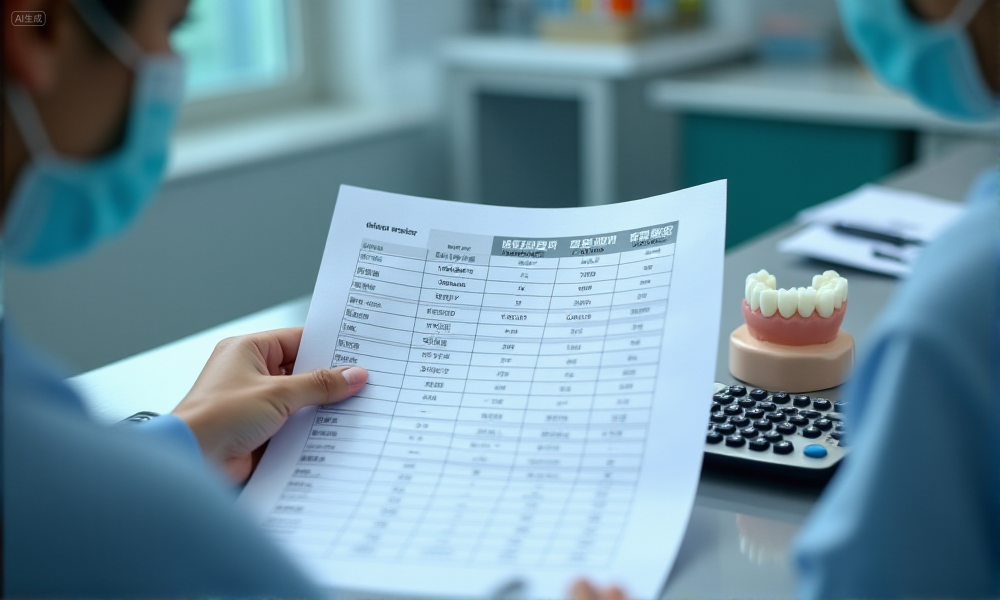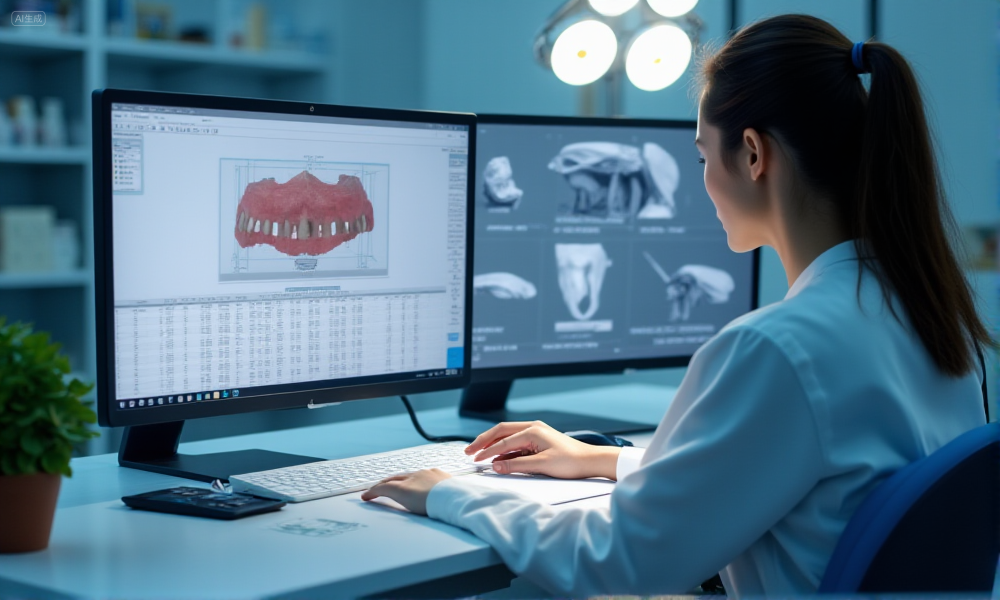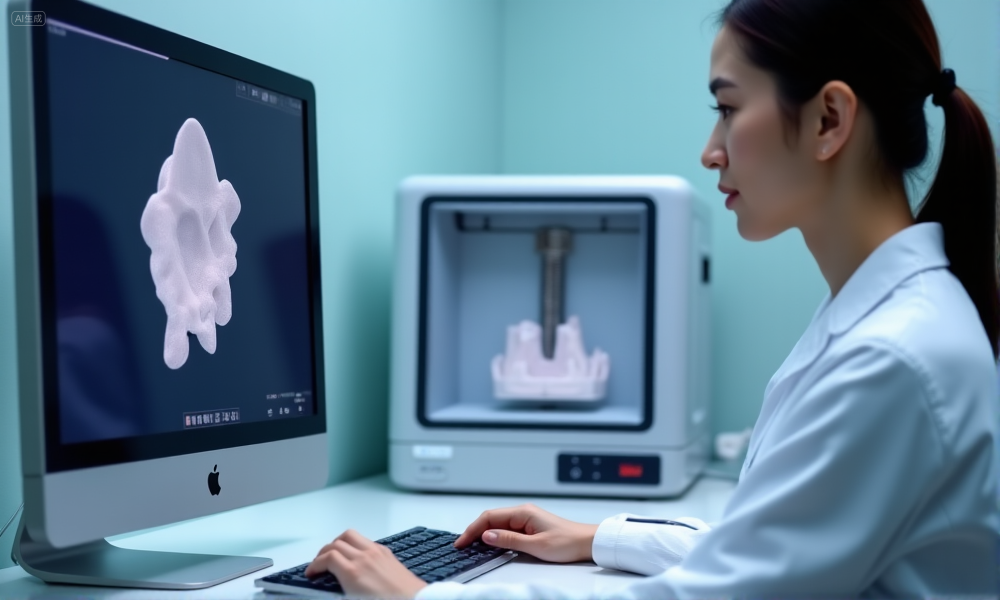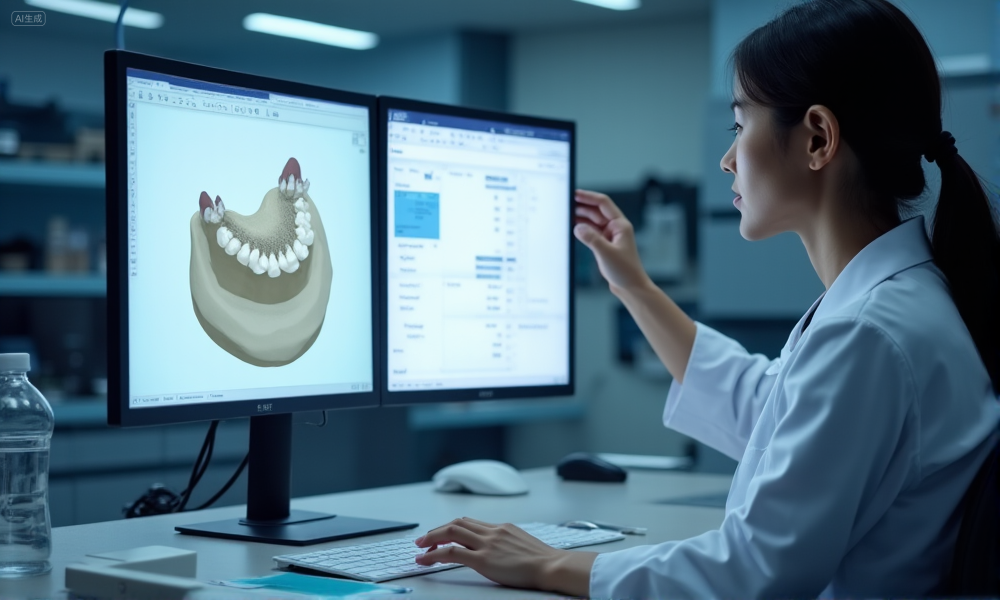Selecting a dental implant lab partner goes far beyond chasing the lowest unit price. For procurement teams, it’s about balancing cost structure, operational impact, and long-term value. The right lab choice affects not only immediate expenses but also delivery reliability, patient satisfaction, and profitability over time.
When comparing options, it’s essential to assess:
- Pricing models — per-unit, bundled, tiered discounts, or custom quotes, and how each aligns with your case volume and workflow.
- Total cost factors — shipping, customs, rush fees, material upgrades, remake rates, and currency risk that can impact true ROI.
- ROI metrics — gross margin per case, break-even points, productivity shifts driven by turnaround time, and best/likely/worst-case scenarios.
- Comparison methods — normalized data sets, weighted scoring, and real-world validation from historical performance.
- Collaboration influences — clear communication SLAs, digital workflow compatibility, consistent quality gates, and strong technical support.
By applying a structured, data-driven evaluation across these dimensions, decision-makers can compare labs on a fair, like-for-like basis and align their choice with strategic business objectives. The outcome is a partnership that protects margins, supports predictable scheduling, and delivers consistent, high-quality implant restorations.
What Are the Common Pricing Models Used by Dental Implant Labs?
Choosing the right pricing model for implant restorations is about more than comparing unit rates. The structure you select will shape cost predictability, operational flexibility, and long-term ROI. Understanding the most common options helps align lab contracts with your case mix and production goals.

dental-implant-lab-pricing-comparison
Per-unit pricing: pros, cons, and when it fits
This model applies a fixed rate for each restoration, regardless of complexity.
- Pros: Easy to calculate and track.
- Cons: Less cost-efficient for high-volume clinics; monthly totals vary with case count.
- Best fit: Clinics with smaller or fluctuating monthly volumes.
Bundled/case-based pricing: inclusions, exclusions, predictability
A single price covers the entire case, often including abutment, screw, and crown.
- Pros: Predictable per-case cost; simplifies patient fee structures.
- Cons: May pay for unused components in simpler cases.
- Best fit: Clinics with many standard single-unit or full-arch cases.
Tiered volume discounts: thresholds, commitments, and risks
The unit price decreases once agreed monthly or quarterly thresholds are met.
- Pros: Substantial savings for consistent high-volume ordering.
- Cons: Loss of discount if volumes drop; may require contractual commitments.
- Best fit: DSOs and large group practices with steady order flow.
Custom quotes for complex restorations: drivers (materials, tech, specialist time)
Used for advanced or high-aesthetic cases that require premium materials, extra design work, or specialist input.
- Pros: Tailored to unique case needs.
- Cons: Quotation process can add lead time.
- Best fit: Full-arch hybrids, multi-unit bridges, and intricate esthetic restorations.
During a recent review, a mid‑sized clinic in Australia worked with Raytops to restructure its pricing approach. They had previously relied solely on per‑unit rates, which made monthly costs unpredictable. After analyzing case patterns together, they shifted standard crowns to a bundled model and kept only complex cases on custom quotes. This reduced the need for monthly pricing adjustments, simplified approvals, and improved scheduling confidence for both teams.
What Information Should Be Included for Comprehensive and Accurate Case Submission?
Accurate and complete case submission is the foundation of smooth implant restoration workflows with overseas labs. Providing all necessary details upfront minimizes clarification requests, reduces the risk of design errors, and helps keep production schedules on track—especially when working across time zones.

dental-lab-digital-case-submission
What Patient Details and Restoration Specifications Should Be Shared with the Lab?
Sharing patient initials, implant position, type of restoration, and margin preferences allows the lab team to tailor their design from the start. Including photos of the site, opposing dentition, and adjacent teeth further improves shade and morphology matching.
How Do Material Choices, Shade Selection, and Occlusion Data Impact Implant Restorations?
Material selection determines strength, aesthetics, and compatibility with the abutment system. Precise shade data, ideally supported by high-quality photographs or digital shade systems, ensures color integration with surrounding dentition. Accurate occlusion records prevent high spots and ensure long-term comfort.
Why Are High-Quality Digital Impressions Crucial for Fit and Precision?
Digital impressions from calibrated intraoral scanners eliminate many of the distortions common in conventional impressions. They allow for exact margin capture and better emergence profile planning, which directly influences the final fit and patient comfort.
What Are Common Information Gaps That Lead to Production Delays?
Frequent causes include missing implant system details, absent occlusion records, unclear shade specifications, or lack of approval for design modifications. Each of these gaps triggers additional communication cycles, which can push delivery dates back.
In one recent collaboration, a European clinic standardized its case submission checklist after several orders required multiple clarifications. By integrating high‑quality digital impressions, accurate shade selection, and detailed abutment specifications into every submission, they eliminated nearly all mid‑process queries. Over the following months, turnaround became more predictable, and urgent cases were completed without last‑minute rushes—building greater trust between both teams.
Pricing is just one dimension of the outsourcing decision. For a broader framework on evaluating dental implant outsourcing options—including compliance, scalability, and risk—see our guide on how to evaluate outsourcing options for dental implant production.
How Can Digital Technology Speed Up Workflows and Reduce Errors in Implant Restorations?
Digital tools are transforming implant restoration workflows, making them faster, more accurate, and easier to manage across distances. Clinics that integrate the right technology at each stage—from impression capture to final delivery—can shorten turnaround times, reduce remakes, and improve the consistency of results.

digital-dental-workflow-implant-restorations
How Can Intraoral Scanners Ensure Precise Digital Impressions?
Well-calibrated intraoral scanners capture accurate margin detail, emergence profiles, and occlusal surfaces in a fraction of the time required for traditional impressions. This precision reduces adjustment time at delivery and eliminates distortion risks during shipping.
Why Is CAD/CAM Design and Milling Critical to Speeding Up Production?
CAD/CAM workflows allow labs to design and mill restorations with micron-level accuracy, reducing manual adjustments. Digital files also make revisions faster, since adjustments can be made directly to existing designs without starting from scratch.
How Can 3D Printing Be Used for Surgical Guides and Temporary Restorations?
- Produces surgical guides for implant placement with exact fit based on CBCT and intraoral scan data.
- Enables rapid fabrication of temporary crowns or bridges, allowing immediate provisionalization for the patient.
- Reduces reliance on external suppliers for intermediate steps, cutting days from the overall timeline.
What Role Do Cloud-Based Platforms Play in Secure File Sharing and Version Control?
Cloud-based portals centralize all project files, maintain clear version histories, and provide instant access for both clinic and lab teams. This reduces errors caused by outdated files and enables real‑time collaboration across time zones.
A Scandinavian clinic that transitioned from email-based file sharing to a cloud-based portal saw immediate workflow benefits. Design approvals that previously took up to two days were often completed within hours, and there was a noticeable drop in remakes linked to outdated file versions. The lab team also reported fewer clarification requests, as all files and notes were centralized and visible to every stakeholder.
How Can Potential Issues Be Addressed Proactively to Avoid Delays?
Proactive problem management in implant restoration cases ensures that small issues are caught early—before they disrupt schedules or cause costly remakes. A structured approach with clear escalation paths and documentation keeps the workflow predictable and protects chair-time for patients.

proactive-dental-lab-issue-management
What Protocols Can Be Set for Early Identification of Design or Fabrication Problems?
Early detection protocols include double‑checking incoming case files for completeness, running pre‑production design simulations, and setting a standard review window before milling or printing begins. These steps allow labs to flag margin gaps, shade mismatches, or implant platform errors before they progress.
How Should Changes or Concerns Be Communicated to Prevent Timeline Disruptions?
Using a single, documented communication channel—such as a shared project portal—ensures that all updates are recorded and visible to every stakeholder. Concerns should be escalated within predefined timeframes (e.g., within 12 hours of detection) to avoid production stalls.
Why Is Documenting All Revisions Important for Aligning Records Between Both Parties?
Detailed revision logs create a clear record of what was changed, why it was changed, and when. This not only prevents misunderstandings but also provides an audit trail for quality reviews and future case improvements.
One DSO partner working with our overseas lab reduced design-related delays significantly by implementing a joint “first review” step for all complex implant cases. Both the clinic’s treatment planner and the lab’s design team would approve the initial CAD model within a fixed 24-hour window. As a result, fewer than 5% of cases required late-stage design changes, and shipping schedules stayed consistent over a six-month review period.
How Can Quality and Consistency Be Ensured in Collaboration with Overseas Labs?
Maintaining consistent quality in implant restorations requires more than occasional inspections—it depends on a continuous system of quality assurance, feedback, and process alignment between the clinic and the lab. Clear standards, routine audits, and ongoing communication help ensure each case meets the same clinical expectations.

dental-lab-quality-control-zirconia
What QA Measures Should Be Implemented to Verify Restoration Quality Before Shipping?
Labs should perform multi-stage inspections—checking margin fit, occlusion, shade accuracy, and surface finish—before packaging. Using magnification tools and standard reference models ensures measurements are consistent and aligned with the clinic’s requirements.
How Can Periodic Process Audits Improve Collaboration with the Overseas Lab?
Audits conducted quarterly or semi-annually provide a structured way to review performance data, identify patterns in remakes, and adjust protocols accordingly. This creates a shared responsibility for maintaining standards over time.
How Can Feedback Loops Be Created to Improve Long-Term Collaboration Efficiency?
Formalizing feedback channels—such as monthly review calls or a shared performance dashboard—enables both parties to track metrics like remake rates and turnaround consistency. Over time, this builds a data-driven foundation for continuous improvement.
One regional distributor we collaborate with saw a noticeable drop in shade mismatch cases after implementing a shared “color calibration” protocol. Both their in‑house dentists and our QA team began using the same shade guide under standardized lighting conditions. Within three months, shade‑related remakes fell by nearly half, and their customer satisfaction scores improved in follow‑up surveys.
How Can Communication Efficiency Be Measured and Improved for Implant Restoration Cases?
Measuring communication efficiency ensures that both the clinic and the overseas lab are aligned, responsive, and able to resolve issues before they impact delivery timelines. By tracking the right metrics and regularly refining workflows, teams can sustain high productivity while minimizing costly delays.
What KPIs Should Be Used to Track Turnaround Time, Response Rates, and Issue Resolution?
Core metrics include average case turnaround time, percentage of responses within target SLA, and resolution time for fabrication or design issues. These KPIs give a measurable picture of where communication breakdowns occur and how they impact workflow.
How Can Review Meetings Help Refine Communication Workflows?
Scheduled review meetings—monthly or quarterly—allow both teams to review data, address recurring bottlenecks, and implement corrective actions. This is particularly effective when combined with shared dashboards and documented action items.
How Can Best Practices Be Scaled Across Multiple Implant Restoration Cases?
Once communication protocols prove effective in one project, they should be standardized and rolled out across all active cases. Documenting these workflows and training new team members ensures consistency, even as case volumes grow.
One dental group we work with improved their average case turnaround by two days simply by consolidating their queries into a single daily update, rather than sending multiple scattered messages. This reduced back-and-forth, allowed for clearer prioritization, and gave both teams more uninterrupted time to focus on production work.
Conclusion
Sustaining high-quality, on-time implant restorations from an overseas dental lab is not only about price—it’s about building a structured, reliable collaboration framework. When procurement teams and dental practices commit to clear communication channels, accurate case submissions, integrated digital workflows, proactive issue management, and consistent quality checks, the result is more predictable timelines, fewer remakes, and stronger long-term ROI.
As an overseas dental lab, we have seen how these principles directly transform day-to-day operations for our partners—turning complex, cross-border coordination into a streamlined, mutually beneficial process. By focusing on measurable outcomes and shared standards, dental teams can reduce operational risks, maintain patient trust, and scale their implant restoration capacity with confidence.


